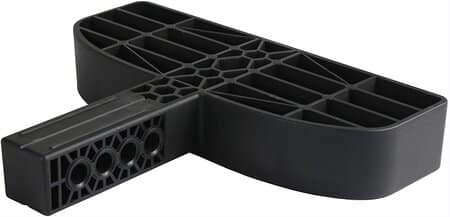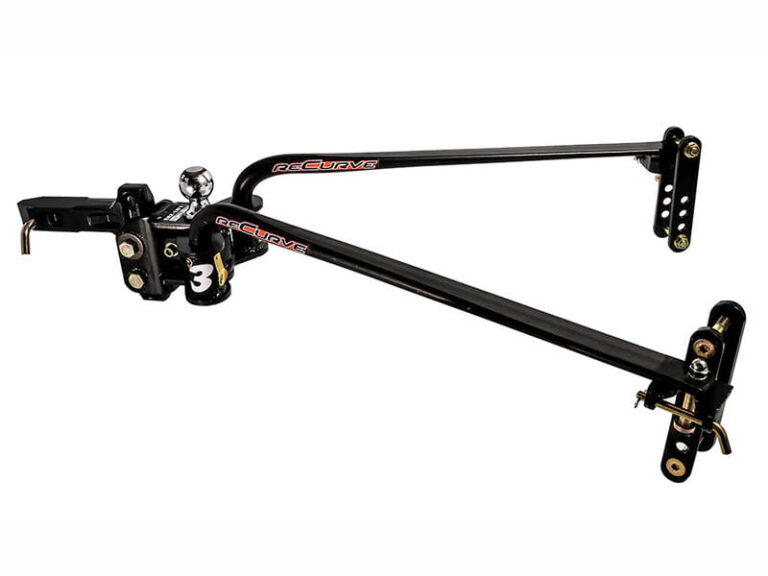Towing a trailer is a great way to enjoy the outdoors, but choosing the right hitch for your vehicle is important. There are different hitches, and each has its benefits and drawbacks.
Step bumpers are designed for light towing, while receiver hitches are made for heavier loads. Here are the key comparisons between these two types of hitches:
Key differences between Step Bumper and Receiver Hitch

Load capacity:
A step Bumper is designed for light towing, typically under 3,500 lbs.
A receiver Hitch is made for heavier loads, and can typically tow up to 20,000 lbs with a class 5 hitch.
Installation:
Step Bumpers are generally easier to install than receiver hitches.
Receiver Hitches may require drilling or welding during installation.
Visibility:
Step Bumper: When a trailer is attached to a step bumper, it can obscure the driver’s view out the back of the vehicle.
Receiver Hitch: Receiver hitches do not obstruct the driver’s view.
Cost:
Step Bumpers are typically less expensive than receiver hitches.
Receiver Hitches can be more expensive, depending on the size and weight capacity.
Now let’s talk about Step Bumper and Receiver Hitch briefly.
What is a step bumper?

A step bumper is a towing device typically found on light-duty trucks and SUVs. It is designed for light towing, usually under 3,500 pounds. The step bumper is mounted on the back of the vehicle, and the trailer tongue attaches to the bumper.
Types of bumper:
There are 5 types of bumper:
Deep Drop Bumper: The deep drop bumper hangs down lower than the regular bumper, making it more challenging to attach a trailer.
Regular Bumper: The regular bumper is the most common type of bumper designed for light towing.
Tube Bumper: The tube bumper is made of a steel tube designed for heavy-duty towing.
Roll Pan Bumper: The roll pan bumper replaces the traditional rear bumper and gives the vehicle a cleaner look.
Step Bumper: The step bumper is designed for light towing and is typically found on light-duty trucks and SUVs.
How to install a Step bumper hitch? Step by step
1. Park the vehicle on a level surface and set the parking brake.
2. Raise the tailgate and remove any items from the storage area.
3. Locate the hitch mounting points on the frame of the vehicle.
4. Place the hitch receiver in position and align the holes.
5. Insert the bolts through the hitch and frame, and tighten with a wrench or socket set.
6. Lower the tailgate and replace any items in the storage area.
7. Test the hitch by attaching a trailer and checking for proper operation.
Benefits of Step bumper
There are several benefits of using a step bumper:
- Ease of installation: Step bumpers are generally easier to install than receiver hitches.
- Inexpensive: Step bumpers are typically less expensive than receiver hitches.
- No drilling or welding required: Receiver hitches may require drilling or welding during installation.
Cons
There are a few cons of using a step bumper:
- Load capacity: A step bumper is designed for light towing, typically under 3,500 lbs.
- Visibility: When a trailer is attached to a step bumper, it can obscure the driver’s view out the back of the vehicle.
What is a receiver hitch?

A receiver hitch is a towing device that is designed for heavier loads. It can tow up to 20,000 pounds with a class 5 hitch. The receiver hitch mounts to the vehicle’s frame, and the trailer tongue attaches to the hitch. Receiver hitches are generally more expensive than step bumpers, but they do not obscure the driver’s view out the back of the vehicle.
Different classes of receiver hitch
Receiver hitches come in five different classes.
Class 1: This hitch is designed for light-duty towing, up to 2,000 pounds.
Class 2: This hitch is designed for up to 3,500 pounds for medium-duty towing.
Class 3: This hitch is designed for up to 5,000 pounds for heavy-duty towing.
Class 4: This hitch is designed for heavy-duty towing, up to 7,500 pounds.
Class 5: This hitch is designed for extreme heavy-duty towing, up to 20,000 pounds.
Also read: Types of trailer hitches and Hitch classes
How to install a receiver hitch? Step by step
1. Park the vehicle and set the parking brake.
2. Place blocks behind the rear wheels to prevent the vehicle from rolling while working on it.
3. Disconnect the negative battery cable to prevent any electrical shorts while working on the vehicle.
4. Raise the vehicle with a jack and support it with jack stands.
5. Remove the bolts that hold the bumper fascia with a wrench or socket set.
6. Pull the bumper fascia away from the vehicle to access the hitch mounting brackets.
7. Remove the bolts that hold the hitch mounting brackets with a wrench or socket set.
8. Lower the hitch down from its mounting position.
9. Install the new hitch in the reverse order of removal.
10. Reconnect the negative battery cable and lower the vehicle off the jack stands.
11. Test the hitch by attaching a trailer and loading it to ensure it is installed correctly and securely.
Receiver hitches can be more expensive than step bumpers, but they offer several advantages:
- Heavy-duty: Receiver hitches are made for heavier loads and can tow up to 20,000 pounds.
- No obstruction: Receiver hitches do not obstruct the driver’s view.
Downside:
- Expensive: Receiver hitches can be more expensive, depending on the size and weight capacity.
- Installation: Depending on the size and weight capacity, receiver hitches can be more difficult to install.
- Drilling or welding may be required.
Step Bumper and Receiver Hitch FAQs
Is it safe to tow with a bumper hitch?
Yes, it is safe to tow with a bumper hitch as long as the weight of the trailer does not exceed the capacity of the hitch.
Can I use a receiver hitch with a step bumper?
No, you cannot use a receiver hitch with a step bumper. Receiver hitches are designed for heavier loads and will not fit onto a step bumper.
Is it safe to tow with a step bumper?
Yes, it is safe to tow with a step bumper as long as the trailer’s weight does not exceed the capacity of the hitch. Step bumpers are designed for light towing, typically under 3,500 pounds.
Also read: tongue weight importance during towing a boat
How do you install a bumper hitch?
Bumper hitches can be installed by following the instructions in the owner’s manual. You will need to drill holes into the bumper and secure the hitch with bolts. Some hitches may require welding during installation.
Final Verdict
So, which type of hitch is right for you? If you’re planning on doing any serious towing, then a receiver hitch is the way. However, a step bumper will suffice if you need a hitch for occasional light towing. Whichever type of hitch you choose, read the manufacturer’s instructions carefully before using it.
Also read:



